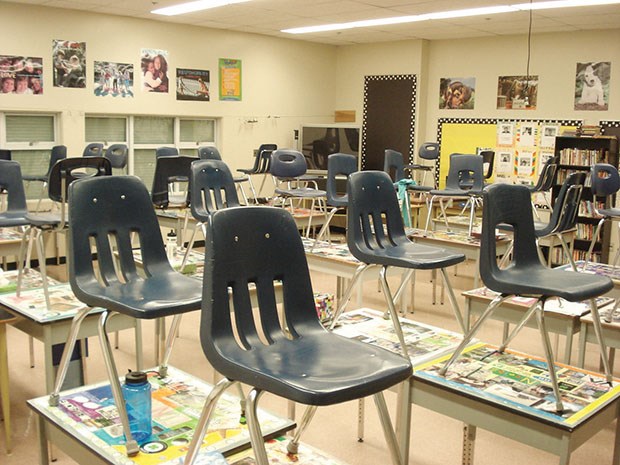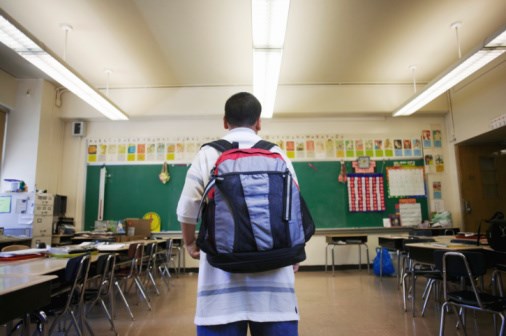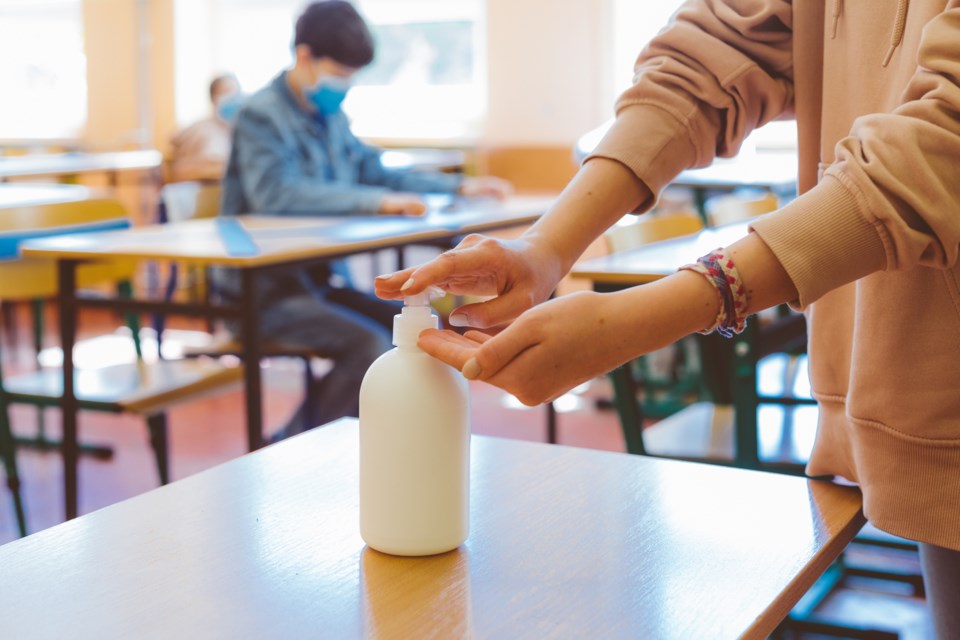In school opening discussions, I think there is a lack of awareness about the ‘wetness factor’ of an elementary school classroom.
Walking into an elementary school at any time prior to March 14, 2020 has always been a bit of a quick slip and slide into the live and swimming petri dish of contagion and germs that 250 small bodies bring with them to school every day, but once head cold season starts around the end of September this year, it is going to be one big, splashy death-defying cannonball drop into one.
The esteemed ladies and gents who make decisions affecting the lives of students and teachers in schools are distanced themselves from the actualities of this damp environment.
It has probably been years since any of them reached down to grasp little Susie’s hand to form a circle with a group, only to realize that the hand they have just taken is really wet and has recently been drawn away from a bodily orifice where moist substances reside. We in the trenches grit our teeth and imagine that we are building up our immune systems.
As a teacher, at some point we eventually give up trying to dodge these situations. We resign ourselves to the reality that Thanksgiving weekend is exactly how long it takes to wake up watery eyed and congested from the common cold. If we are lucky and we spend the entire long weekend in bed, we will likely recover and not have to endure the secondary infections that overwork, stress and exhaustion can exacerbate into bronchitis or pneumonia depending on the strain that we swam with the week before.
This year when cold season hits, we could end up dead.
We were seated in a circle on the floor. My mouth was open because I was singing with the kindergarten class. The song was cute and bonding; something like “If you’re happy and you know it clap your hands”.

I felt a tiny finger tap me lightly on the shoulder. Beppo needed to go to the bathroom and wanted to ask permission to leave the room. I rotated my head to the right to see why I was being tapped at the same time that Beppo let out one impressively huge sneeze which rid him of one gigantic congealed ball of snot that shot from his throat and landed on my tongue.
Wild eyed, aghast and in mild shock at the implications of this action, my fingers clawed at my tongue to rid body and soul of the hideously solid blob. In my mind’s eye it was irregularly shaped, about the size of a small slug, some shade of green, hopefully not blood specked or brown and had a definite chunkiness to it.
I spat. I shuddered. I scrambled to my feet. As I rushed toward the sink, I quibbled over whether to grab paper towel to wipe it off or water to rinse it off. I know I did both but I forget the order. Three days later I was home in bed with sinuses stuffed painfully shut with one of the worst head colds I have ever known.
Beppo is now in Grade 7 and every time I have seen him for the past seven years, I have remembered this involuntary intimate exchange with a small retching gag.
This is the second time in my teaching career that largish identifiable particles of nasal mucous have landed inside my open mouth. The first time was when I was teaching primary choir Row Row Row your boat in canon. Two groups had started their part beautifully and as the front row opened their mouths… you guessed it… out shot ‘respiratory droplets’ of slippery phlegm, chunky in nature from a student that landed on my tongue. I was singing. Singing requires the mouth to open as does speaking.
Opening the mouth opens one up to infection. Since learning about Covid-19, I know that avoidance of droplet and contact precautions are recommended by the World Health Organization. I wonder if WHO could reclassify this recommendation to also avoid projectile chunks, yellowish globules or plain old visible flying spray.
I am not imagining this. I have seen it, lived it, tasted it and been humbled to admit that it is part of the job of teaching.
If you have not been in a classroom for a while, chances are that you may never have observed an activity that I call ‘double picking’. This happens when you glance over at a child, recoil and avert your gaze in embarrassed horror to realize that clever Billy has his forefinger and middle finger inserted inside both nasal cavities at the same time. Both fingers are scratching away. Anticipating that this activity will be productive, I have handed these tykes tissues while saying “We don’t pick our nose in public. Please use a tissue or go to the bathroom and use toilet paper. Then wash your hands.”
We know this most often does not happen. The quick and dirty action is to yank those sticky strings of nose pickings out of there when the urge strikes. They get wiped on the closest near to hand surface often on the underside of school desks. I know this because I have seen them there later, disgustingly dried on and permanently bonded, where other people touch them in perpetuity. Glue manufacturers might be interested in patenting the stuff.
Then there are those parents who send their kids to school sick. Who knows why that is we wonder? Both parents have to get to work and whether the child begs to go to school to be with their friends, or whether they beg to stay home on the couch and nurse that cold remember both parents have to get to work. I wonder sometimes how any rational brain can justify this.
What are they thinking? That this day, those germs are noninfectious. I suppose they weigh the consequences and sending Charlie to school is not going to harm their income earning potential as much as annoying the boss for staying home with a sick child. (aka teacher as babysitter.)

On one such occasion, BJ was sniffling loudly and continually swiping at his chafed nose and watery eyes in the obvious throes of a nasty and productive head cold. I walked past his desk with the tissue box and offered him one. He smiled at me clearly in an uncomfortably congested state and declined my offer of one saying, “It’s okay. I brought two shirts with me today”. Surely enough, when the sleeves of that dark green rugby shirt had both turned a darker shade of wet, he came back from running outside in the rain without a coat on at lunch time to change into the also long sleeved navy blue shirt, prepared for an afternoon of swiping and mopping up bodily fluids.
We are in the grip of the worst pandemic the world has ever known and teachers have little say about being tossed into the petri dish of contagion also known as the elementary classroom.
Once the rain starts head colds also start. We call it ‘cold season’. Walk a day in any teacher’s shoes and you will see sights that defy any World Health Organization recommendations on how to avoid ‘droplet contamination’. You will see one hand down the pants while the other hand picks. You may see the double picker and you will see things coming out of mouths and noses that will sear into your memory for a lifetime.
Although you may attempt to dodge the flying projectile globules of snot and spit, you will likely end up sick in bed days later. Schools are wet and messy germ pits, petri dishes of contamination. That’s why ‘cold season’ wipes out so many teachers’ sick days.
So, if you are a suit and you’re asking us to get back in those classrooms because children need to be cared for please stop and think about what you’re inversely asking us to do this fall.
Die?
Cheryl Kay, Ph. D. is a retired teacher 2012, Temporary Teacher on-call, for the Burnaby School District.



